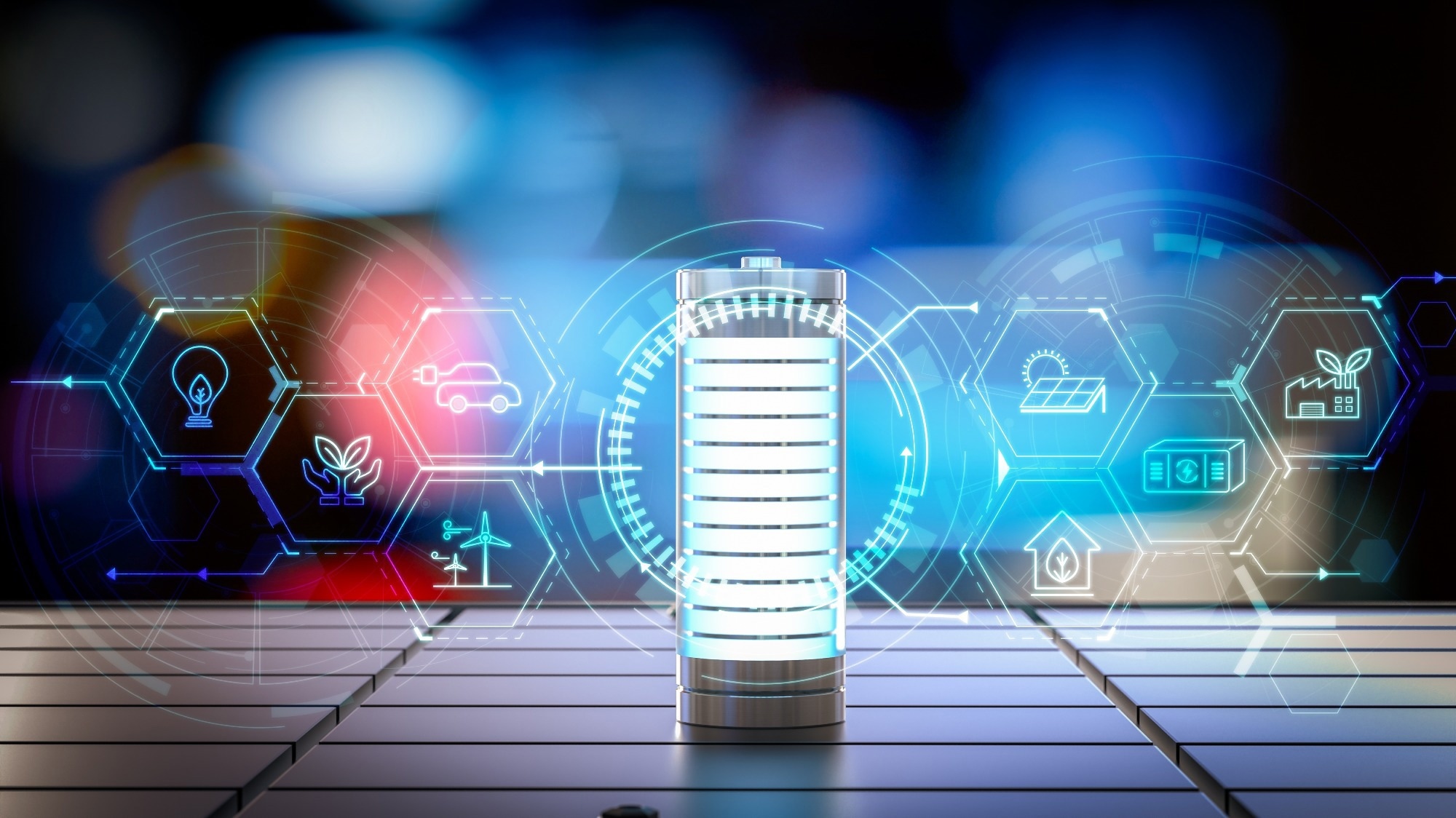In a recent article in Nature Communications, researchers introduced a novel approach to enhancing polymer nanocomposites for capacitive energy storage by utilizing nanoconfined polyetherimide (PEI) within a flexible laminated structure. This study demonstrates how these nanocomposites can achieve significant energy density and efficiency, making them suitable for demanding environments.

Image Credit: Phonlamai Photo/Shutterstock.com
Background
The search for efficient energy storage solutions has intensified, particularly for high-temperature applications where conventional materials often fail. Polymer nanocomposites have gained attention due to their potential to improve the performance of traditional dielectric materials. By incorporating nanomaterials, polymers can achieve enhanced electrical, thermal, and mechanical properties, leading to improved energy storage capabilities.
PEI, known for its excellent thermal stability and mechanical strength, was chosen as the focus of this study. The research builds on previous findings that highlight the impact of nanoconfinement on modifying polymer properties, particularly regarding charge transport and breakdown strength.
The Current Study
The preparation of the nanocomposite films involved several key steps. First, PEI films were coated onto indium tin oxide (ITO) substrates, providing a flexible, high-temperature-resistant base. Al2O3 nanolayers were then deposited using an ALD system, with trimethylaluminum (TMA) as the precursor. The deposition process was conducted at a pressure of 300 mTorr and a temperature of 130 °C.
Each deposition cycle included a TMA pulse, argon purging, oxygen plasma pulse, and another argon purging, with specific durations for each step. The thickness of the Al2O3 layers was meticulously controlled, with a single cycle yielding a thickness of 0.14 nm.
The PEI nanofilm was created by mixing PEI pellets in N-methyl pyrrolidone (NMP) and then spin-coating the solution onto the substrate. The film's thickness, ranging from 10 nm to 1.3 μm, was controlled by adjusting the solution concentration and spin-coating speed.
Electrical measurements were conducted after sputtering platinum electrodes onto the nanolaminates' surface, with the ITO/PEI substrate as the bottom electrode. The platinum electrode thickness varied to ensure optimal contact with the PEI layer. The study used displacement-electric (D–E) field hysteresis loops to assess electric properties at different temperatures and performed electric breakdown strength tests with a high resistance meter.
Results and Discussion
The results demonstrated that the multilayered nanolaminates exhibited remarkable electrical properties, with a breakdown strength significantly higher than that of bulk PEI. The study found that the breakdown strength increased with the number of layers, indicating that the nanoconfined structure effectively mitigated the risk of dielectric breakdown. The multilayered configuration also contributed to enhanced charge transport mechanisms, as evidenced by the observed hopping conduction and Schottky emission behaviors.
The energy density and efficiency of the nanocomposites were evaluated under varying temperature conditions. At 200 °C, the nanolaminates achieved an energy density of 18.9 J cm-³ and an energy efficiency of approximately 91 %. These values surpass those of conventional dielectric materials used in energy storage applications. The study attributed this performance to the synergistic effects of nanoconfinement and interfacial trapping, facilitating improved charge injection and transport.
Flexibility tests revealed that the nanolaminates maintained their performance even after extensive bending, a crucial feature for applications in flexible electronics where repeated mechanical deformation is common.
The study also emphasized the significant role of temperature in influencing the nanocomposites' performance. As temperature increased, charge transport mechanisms shifted, leading to variations in energy density and efficiency. The research provided a detailed analysis of the underlying mechanisms, including the effects of local electric fields and interfacial traps on charge transport.
Conclusion
This research marks a significant advancement in energy storage technology through the development of multilayered nanolaminates based on nanoconfined polyetherimide. The study demonstrated that these nanocomposites possess exceptional thermal stability, mechanical flexibility, and superior electrical performance, making them ideal for high-temperature applications.
The energy density and efficiency achieved in this study suggest that these materials could outperform traditional dielectric materials, paving the way for their use in next-generation energy storage devices. The insights gained contribute to a deeper understanding of charge transport mechanisms in polymer nanocomposites and open new avenues for designing flexible and efficient energy storage solutions.
Future research may further optimize the nanolaminate structure and explore additional nanomaterials to enhance performance. This study represents a promising step toward realizing advanced energy storage technologies capable of operating in challenging environments.
Journal Reference
Li, X., et al. (2024). High-temperature capacitive energy storage in polymer nanocomposites through nanoconfinement. Nature Communications. DOI: 10.1038/s41467-024-51052-y, https://www.nature.com/articles/s41467-024-51052-y